The State of Editing, 2011

This year's "State of the Edit" survey asked representatives of leading NLE systems about the challenges facing today's editors and how the industry is responding to them. Here are some highlights.
"The biggest thing editors are facing is the complexity of all the file formats coming at them and the number of screens they have to serve on the back end," said Bill Roberts, director of Adobe's professional audio and video products. "It would be lovely if the whole world could decide on just one acquisition format, but that simply isn't going to happen. So making it possible to deal with as many native file formats as possible and providing a set of tools to accommodate a wide spectrum of delivery requirements has been a major focus for us."
In Autodesk's perspective, stereoscopic 3D is a specialized delivery format but ability to use 3D data is a key tool throughout the whole editorial process.
"3D is ubiquitous across our product line," said Marc Hamaker. senior product marketing manager, creative finishing, for Autodesk, "and that brings with it the need to capture more data in the field, created in CG or within the editing application."
Wrangling that data has become crucial for all forms of video storytelling.
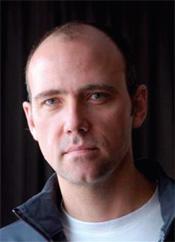
Bill Roberts
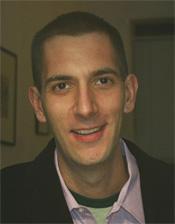
Marc Hamaker
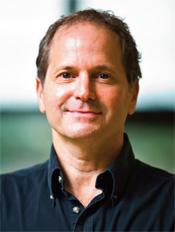
Andy Liebman "For example, whether you are delivering a monoscopic or stereoscopic final product, editors need 3D tools to create look development, add textures, and control the way light falls across a scene," Hamaker explained. "Handling all of this enhanced data has become paramount to the post production finishing process."
SPECIALIZED CAMERAS
New cameras are also raising the bar for editors' skills.
"The desire on the part of producers to utilize specialized cameras often means they tend to mix different models in a single project," said Angus Mackay, marketing manager at Avid.
These new file-based recordings provide vastly more footage than during celluloid days, so the challenge of finding needed shots can be daunting. Avid has invoked voice recognition technologies as a solution. "The new phonetic searching tools we have developed can help editors make their way through even non-scripted productions such as documentaries and news packages," Mackay said.
For Andy Liebman, founder and CEO of EditShare who acquired the Lightworks NLE a year ago, the biggest challenge is getting sophisticated editing capabilities into as many hands as possible. As a result, although EditShare's core business is selling turnkey systems, the basic Lightworks editing software is available for free off their Web site.
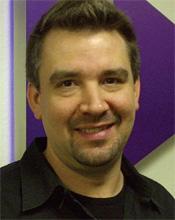
Angus Mackay

Ed Casaccia
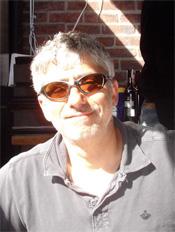
Boris Yamnitsky "Our software is all Open Source, but we are also working hard on setting up an Apps store, creating interfaces with third party I/O devices, and providing support," Liebman said. "But our free software can run on anyone's Windows 7 system as long as they have compatible hardware."
For Ed Casaccia, director of product marketing at Grass Valley editing servers and storage, Moore's Law is driving the editing craft.
"We are taking full advantage of increased computing power by letting editors mix and match various formats on the same timeline in real time," Casaccia said.
The advent of 3D just adds another dimension to the challenge.
"Editors are learning that cutting stereoscopic 3D is different from 2D," Casaccia said. "For example, they are starting to want to cut back on the 3D effect going into edit points and adjust their pacing to accommodate the way the audience perceives action in Z-space."
VIEWER EXPECTATION
The president of BorisFX, Boris Yamnitsky, tells us his Media 100 edit software's development is being driven by viewer's expectations of greater content.
"We are seeing a call for increased reliance on heavy effects in the programming," Yamnitsky said. "Things like color correction, light enhancements, glows, blurs and lens distortions are all being done in post these days. Modern cameras actually capture more than the eye can see, so editors are even simulating camera moves in their NLE's."
"Today's editors need a global workflow," said Steve Owen, director of marketing at Quantel, "letting them access post production capabilities anywhere in the world."

Steve Owen

Matthew Brohn Achieving interactivity over the Internet has been a dream for a long time, but Quantel feels they have made it practical with their new QTube technology.
"This involves more than just moving files through cyberspace," Owen said. "How do you deal with changes? Is what you are seeing frame accurate? Is viewing the result hindered by excessive latency? Among many other technologies, we have leveraged Microsoft's Smooth Streaming IIS Media Services extension to help us create and deliver virtualized files anywhere they are needed."
But just so we don't forget, memory is also important and Vegas Pro software has been aggressively addressing it.
"With 4K and beyond files sizes becoming common, NLE's can use all the processing memory they can get," said Matthew Brohn, product manager for Vegas Pro at Sony Creative Software. "Sony Vegas was the first major NLE to offer 64-bit support and that lets editors exceed the 4 GB memory limit of 32-bit systems."
Jay Ankeney is a freelance editor and post-production consultant based in Los Angeles. He can be contacted at JayAnkeney@mac.com.
Get the TV Tech Newsletter
The professional video industry's #1 source for news, trends and product and tech information. Sign up below.
